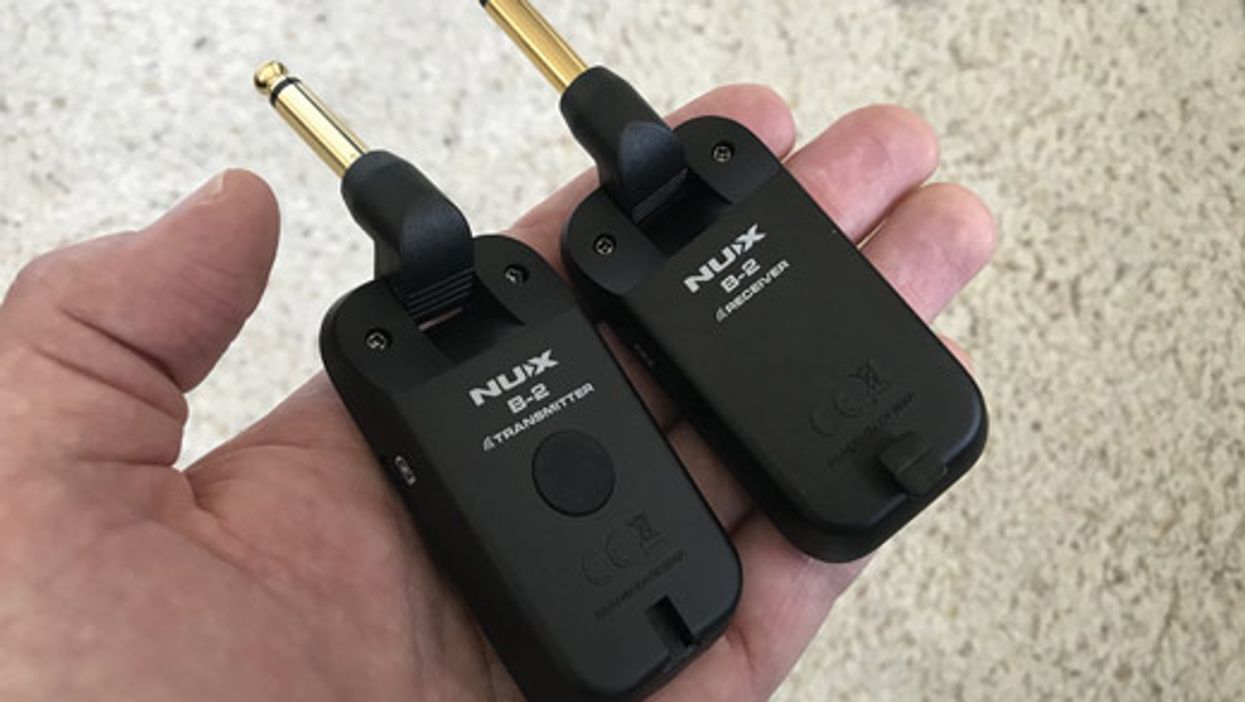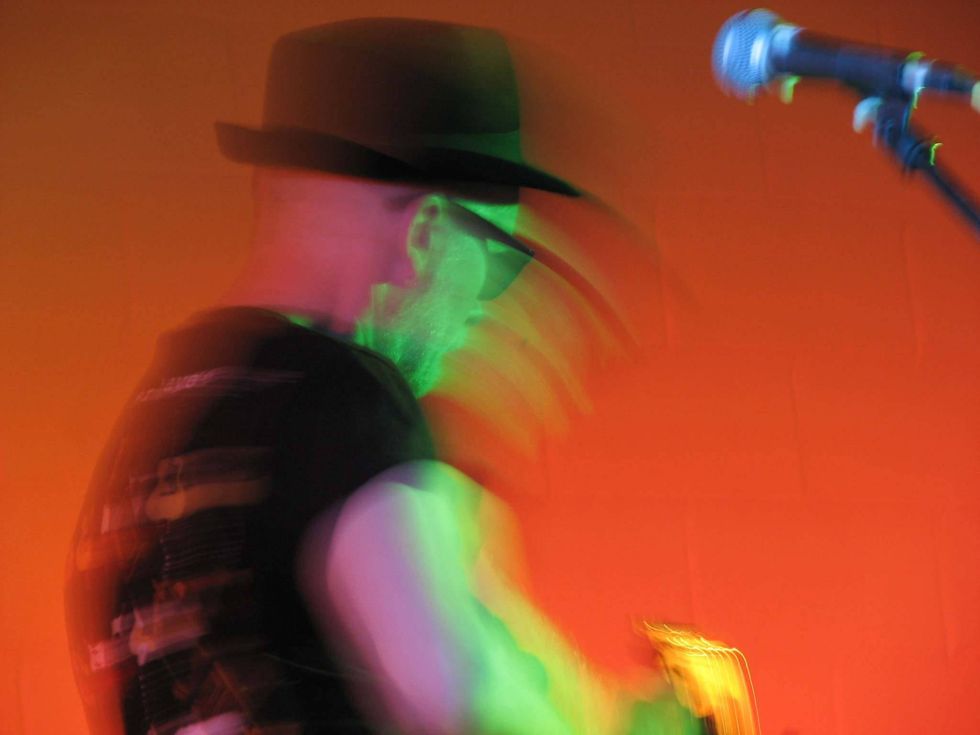I'll always remember the first time I tried using a wireless system for my guitar. It was really fun not being tethered by a cable and the freedom to roam the stage was addictive. In the '80s, there were only a few affordable systems to choose from. Nady and Samson both made units that worked pretty well and weren't too expensive, but these early systems did leave something to be desired sonically. They were analog, and even the best analog wireless systems (by necessity) use some form of companding technology, which is essentially compression and expansion. This allows for a reasonable signal to noise ratio, but the drawback would usually be compromised audio. Bass notes could suffer and the guitar volume controls never seemed to respond quite the same as when using a cable. Today, digital wireless has taken over.
Digital wireless = no companding. Digital wireless doesn't use the same technology as analog systems. With a digital system, the transmitter converts signal via an A/D converter to, essentially, ones and zeros, and then it gets converted back to audio at the receiver end by a D/A converter. Because the tech is completely different from analog systems, no companding is needed. Modern converters are super high-quality and not that expensive, so even digital units that might be considered entry level can sound great. One downside to digital wireless is that there is always some latency introduced by the A/D/A conversion process, but it's minimal with modern systems (under 3 ms is not uncommon).
Options, options, options. On the low end (under $500), there are numerous digital wireless systems available from companies such as Audio-Technica (System 10), Shure (GLX-D), and Line 6 (Relay G10, G30, and G50). Many of these units have guitar-pedal-style receivers, and many have unique, useful features such as A/B switching, onboard tuners, and more. Most have a number of available channels to choose between, and some will automatically select the clearest one. A range of 100 to 200 feet seems to be the norm in this range of units. I've personally found that these inexpensive systems can sound every bit as good as units costing three to four times as much. So, what does spending more on a wireless system get you? Read on.
Upper-end systems will typically offer greatly increased range (up to 100 meters/300 feet), which is important for big stages. They also offer the ability to scan and select from a wider range of frequencies, either automatically or by manually dialing in the exact frequency you want to use. This is an absolute necessity for professional touring situations where many wireless devices are being used simultaneously.
With the advent of wireless in-ear monitor systems, wireless traffic has become very crowded on some stages. Just imagine how many wireless frequencies are being used simultaneously for festivals featuring multiple bands. With everybody sporting an in-ear pack and most of the musicians going wireless for their instruments, it's comparable to L.A.'s 405 freeway at rush hour! I've done some tours that actually employ a person to scan for all available frequencies, and then assign them to each musician and crew person using wireless. For big tours, systems such as Shure's ULX-D or Axient are the name of the game.
Other concerns. Most digital wireless systems will provide an extremely full-frequency response (20 Hz to 20 kHz), with up to a 110 dB SNR (signal to noise) ratio. This translates to pristine audio. You are essentially turning your guitar into a low-impedance, buffered source, not unlike having an onboard preamp or active pickups. The problem is that some may perceive that pristine audio as somewhat sterile tone. That's because many of us are used to at least some of the capacitance (high-end roll-off) that a 10' to 20' cable will provide. Line 6 wireless units feature a “cable tone simulator" that, yes, simulates the high-end roll-off a cable will impart on your tone.
If you like and use germanium-fuzz pedals, a wireless system can be a real headache. Once again, using a wireless system is no different than running a buffer in your chain first, and a buffer into certain germanium-based pedals can wreak tonal havoc. Mission Engineering makes an active (buffered) volume pedal with a switch that raises output impedance just enough so that germanium fuzzes will sound at least decent running after it. This is one way to partially counter the issue, but your guitar will still not respond the same way as connecting directly to a germanium fuzz. The other option is to just find a fuzz that sounds great when fed by either high- or low-impedance signals. Most Muff-style fuzzes fall into this category. I'm personally a huge fan of the (discontinued) Boss Hyper Fuzz, and it works nicely with wireless systems to boot.
I hope this column helps answer some questions you may have about wireless systems. Today's units sound better than ever, and with terrific options available at a low price point, there's never been a better time to “cut the cord." Until next month, I wish you great tone!











![Rig Rundown: Russian Circles’ Mike Sullivan [2025]](https://www.premierguitar.com/media-library/youtube.jpg?id=62303631&width=1245&height=700&quality=70&coordinates=0%2C0%2C0%2C0)








